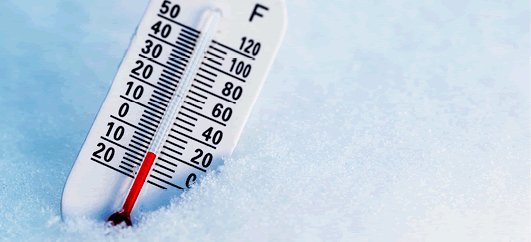
(NEW HAVEN)--Due to the National Weather Service forecast for extremely low temperatures beginning Wednesday and continuing throughout the region for the next several days, the City of New Haven will activate “warming centers” startingtomorrow to provide relief from the cold. Other city shelters will have overnight availability, including activation of increased overflow protocol and extended hours. The City’s website (www.newhavenct.gov) has details about these facilities and any additional updates.
Those who attend a warming location are advised to bring lunch or snacks as no food will be served at these sites.
The City of New Haven Community Services Administration has further provided additional shelter occupancy during extremely cold weather. Shelter availability and information can be provided by calling the Emergency Operations Center at203-946-8221 or 211.
The following locations will serve as “warming centers” for the general public:
- New Haven Free Public Library Main Building is located at 133 Elm Street
Mon 10-8 | Tue 10-8 | Wed 10-8 | Thu 10-8 | Fri 10-5 | Sat 10-5 | Sun Closed
- Fair Haven Branch Library is located at 182 Grand Avenue
Mon 10-6 | Tue 10-6 | Wed 12-6 | Thu 12-8 | Fri Closed | Sat 10-5 | Sun Closed
- Mitchell Branch Library is located at 37 Harrison Street
Mon 12-8 | Tue 12-6 | Wed 10-6 | Thu 10-6 | Fri Closed | Sat 10-5 | Sun Closed
- Stetson Branch Library is located at 200 Dixwell Avenue
Mon 10-6 | Tue 10-6 | Wed 12-8 | Thu 12-6 | Fri Closed | Sat 10-5 | Sun Closed
- Courtland Seymour Wilson Branch Library is located at 303 Washington Avenue
Mon 12-6 | Tue 12-8 | Wed 10-6 | Thu 10-6 | Fri Closed | Sat 10-5 | Sun Closed
###
(NEW HAVEN) — The following is Educational Information and Tips from the New Haven Health Department Regarding the Health Risks of Extreme Cold
Being exposed to cold temperatures for a long period of time can lead to serious health problems. The most common cold weather illnesses are frostbite and hypothermia.
Frostbite
Frostbite is an injury to the body that is caused by freezing. Frostbite causes a loss of feeling and color in affected areas. It most often affects the nose, ears, cheeks, chin, fingers, or toes. Frostbite can permanently damage the body, and severe cases can lead to amputation. The risk of frostbite is increased in people with reduced blood circulation and among people who are not dressed properly for extremely cold temperatures.
Signs of frostbite:
- A white or grayish-yellow skin area
- Skin that unusually feels firm
- Numbness
What to do:
- Get into a warm room as soon as possible.
- Unless absolutely necessary, do not walk on frostbitten feet or toes—this increases the damage.
- Immerse the affected area in warm—not hot—water (the temperature should be comfortable to the touch for unaffected parts of the body).
- Or, warm the affected area using body heat. For example, the heat of an armpit can be used to warm frostbitten fingers.
- Do not rub the frostbitten area with snow or massage it at all. This can cause more damage.
- Don’t use a heating pad, heat lamp, or the heat of a stove, fireplace, or radiator for warming.
- Affected areas are numb and can be easily burned.
- Seek medical treatment.
Hypothermia
Hypothermia is more serious than frostbite. When exposed to cold temperatures, your body begins to lose heat faster than it can be produced. Prolonged exposure to cold will eventually use up your body’s stored energy. The result is hypothermia, or abnormally low body temperature. Body temperature that is too low affects the brain, making the victim unable to think clearly or move well. This makes hypothermia particularly dangerous because a person may not know it is happening and won’t be able to do anything about it.
Hypothermia is most likely at very cold temperatures, but it can occur even at cool temperatures (above 40°F) if a person becomes chilled from rain, sweat, or submersion in cold water. Victims of hypothermia are often (1) elderly people with inadequate food, clothing, or heating; (2) babies sleeping in cold bedrooms; (3) people who remain outdoors for long periods—the homeless, hikers, hunters, etc.; and (4) people who drink alcohol or use illicit drugs.
Signs of hypothermia in Adults:
- Shivering, exhaustion
- Confusion, fumbling hands
- Memory loss, slurred speech
- Drowsiness
Signs of Hypothermia in Infants:
- Bright red, cold skin
- Very low energy
What to do:
If you notice any of these signs, take the person’s temperature. If it is below 95°, the situation is an emergency—get medical attention immediately.
If medical care is not available, begin warming the person, as follows:
- Get the victim into a warm room or shelter.
- If the victim has on any wet clothing, remove it.
- Warm the center of the body first—chest, neck, head, and groin—using an electric blanket, if available. Or use skin-to-skin contact under loose, dry layers of blankets, clothing, towels, or sheets.
- Warm beverages can help increase the body temperature, but do not give alcoholic beverages. Do not try to give beverages to an unconscious person.
- After body temperature has increased, keep the person dry and wrapped in a warm blanket, including the head and neck.
- Get medical attention as soon as possible.
###

Comments